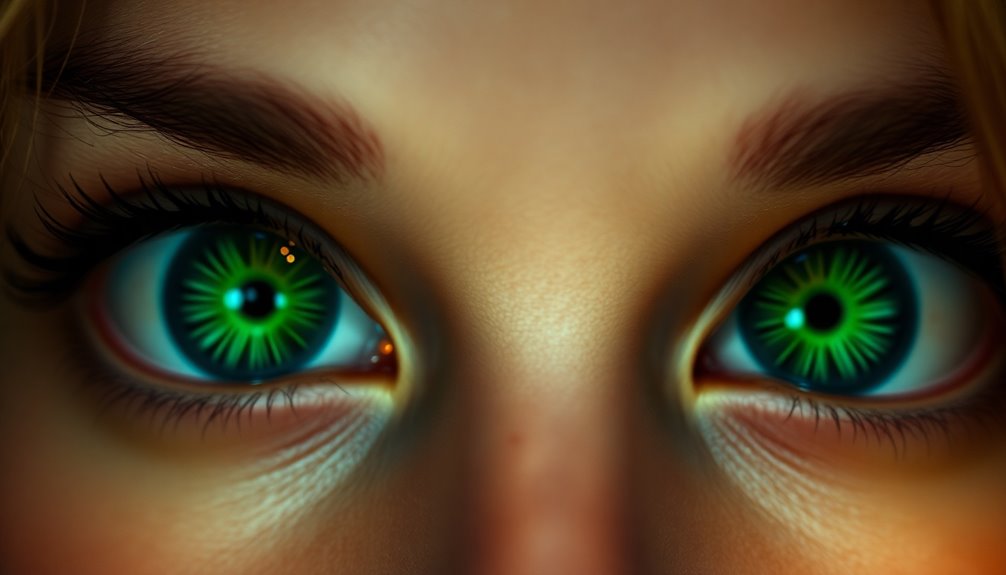A lighthouse symbolizes guidance, keeping you on the right path through life's storms. Its steady beam represents hope and resilience, shining brightly in difficult times. Just like a lighthouse stands strong against rough seas, you too can find strength within yourself. This iconic structure is more than just a navigational aid; it embodies safety and security, offering comfort when the world feels chaotic. Additionally, lighthouses remind you of the importance of solitude for personal growth, helping you connect with your inner wisdom. Discover how these symbols resonate throughout history and culture, guiding countless lives along the way.
Key Takeaways
- Lighthouses symbolize guidance, providing safe passage for sailors amid turbulent waters and serving as beacons of hope during difficult times.
- They represent resilience, standing strong against storms and reminding us that brighter days are always within reach.
- Historically significant, lighthouses have played a vital role in maritime navigation, showcasing cultural heritage through unique architectural designs.
- Their isolation fosters personal growth and introspection, encouraging self-discovery and connection with one's inner wisdom.
- Lighthouses reassure coastal communities, enhancing safety and offering comfort through their steadfast light during uncertain circumstances.
Guidance and Direction

A lighthouse stands as a powerful symbol of guidance and direction in our lives. Just like a lighthouse marks safe passageways for sailors, it reminds you to seek clarity when steering through uncertain times. When you feel lost, the steady beam of light from a lighthouse serves as a beacon of hope, urging you to stay on course.
This symbolism extends beyond the shore; it resonates deeply during personal challenges, highlighting the importance of finding mentors and guiding figures who can offer wise advice.
Historically, mariners have relied on lighthouses as significant landmarks. They provide essential information that helps you make informed decisions in the vast sea of life. In moments of doubt, think of the lighthouse as a reminder to seek guidance and direction.
Embrace the idea that you don't have to face storms alone—there are sources of wisdom around you, waiting to illuminate your path.
As you reflect on your journey, remember the lighthouse's unwavering presence. It's a powerful reminder that guidance and direction are always available to help you steer life's unpredictable waters.
Safety and Security

Lighthouses play an essential role in guaranteeing safety and security for those traversing the seas. They serve as critical navigation aids, warning ships of hazardous coastlines and preventing shipwrecks. When you're out at sea, the guiding light emitted by a lighthouse becomes a reliable beacon, offering you a sense of direction, especially in treacherous weather conditions.
Historically, lighthouses have been strategically placed in areas known for dangerous waters, highlighting their importance in maritime safety. These landmarks instill feelings of comfort and reassurance, acting as symbols of a safe haven for both sailors and coastal communities. When you spot a lighthouse, you can breathe a sigh of relief, knowing that you're nearing safety.
The construction and maintenance of lighthouses reflect a dedicated commitment to maritime safety. With advancements in technology, these structures enhance their effectiveness in guiding vessels safely into harbor.
Whether you're sailing during a storm or steering through calm waters, the lighthouse's guiding light guarantees that you remain secure on your journey. Their presence is a constant reminder that safety is always within reach, even amid life's most tumultuous seas.
Hope and Resilience

In the midst of life's storms, the unwavering light of a lighthouse stands as a beacon of hope, reminding you that brighter days lie ahead. When you face challenges, think of the lighthouse's steady beam as a symbol of resilience. It teaches you that steadfastness in difficult times can lead to overcoming obstacles and emerging stronger than before.
Just like a lighthouse guides lost sailors safely to shore, you too can navigate through your struggles with the light of hope. When life feels overwhelming, remember that you're not alone; there's always a guiding light to help you find your way. Inspirational stories often highlight how individuals rise above adversity, much like a lighthouse standing tall against crashing waves.
Embrace your inner lighthouse keeper, nurturing your strength and reflecting on your journey. As you endure life's storms, let the symbolism of the lighthouse inspire you to cultivate resilience. Stories of overcoming adversity can serve as reminders that with determination and support, you can navigate any challenge.
With hope lighting your path, you can weather any storm and come out on the other side, ready to face whatever lies ahead. Remember, the promise of a brighter future is always within reach.
Isolation and Solitude

Amidst the comforting glow of hope and resilience, you might find yourself drawn to the solitude that lighthouses offer. These towering structures, often positioned in remote and rugged locations, embody the beauty of isolation and solitude. As you contemplate their serene presence, you realize that such moments of solitude can lead to profound personal growth.
Historically, lighthouse keepers faced long stretches of isolation, maintaining their essential roles while battling the challenges of solitude. This solitude, while intimidating, fosters introspection. You may find that these contemplative moments encourage you to explore deeper into your thoughts, sparking inner wisdom and clarity.
Moreover, the solitary nature of a lighthouse serves as a reminder that isolation isn't merely about being alone; it's an opportunity to connect with yourself. In times of uncertainty, stepping back into solitude allows you to reflect, reassess your values, and discover new paths.
Many lighthouses, set against the backdrop of crashing waves, emphasize the journey toward spiritual meaning. Embrace these solitary moments; they can illuminate your path to enlightenment and self-discovery, guiding you through life's storms with newfound strength.
Strength and Steadfastness

Lighthouses embody resilience against adversity, standing strong against fierce storms and harsh conditions.
Their steady light offers a beacon of hope, guiding you through life's uncertainties and challenges.
When you think of a lighthouse, you see not just a structure, but a symbol of unwavering strength and dedication.
Resilience Against Adversity
A lighthouse stands tall against the crashing waves, embodying resilience in the face of adversity. Built from sturdy materials like stone and brick, it withstands severe storms and harsh conditions, reminding you of the strength you can cultivate within yourself.
Just as a lighthouse provides guidance to sailors steering through treacherous waters, your own resilience against adversity can help you find your way through life's challenges.
Throughout history, lighthouses have symbolized steadfast support, preventing shipwrecks and ensuring safe passage. When you face tumultuous times, think of the lighthouse as a constant, reliable force amidst chaos. It encourages you to maintain focus and determination, even when the world feels overwhelming.
Moreover, lighthouses adapt to advancements in technology, illustrating how you too can evolve and grow stronger through trials. Embracing these challenges allows you to build your own resilience against adversity.
Steady Light of Hope
In the midst of life's storms, the steady light of a lighthouse shines brightly, offering unwavering hope and guidance. Just like a lighthouse, you can embody strength and steadfastness, steering through life's challenges with resilience. Built to endure harsh conditions, lighthouses remind you that, even in adversity, you can stand strong.
| Lighthouse Feature | Symbolism | Life Application |
|---|---|---|
| Durable Materials | Resilience | Build your inner strength |
| Bright Beam | Hope and Guidance | Seek out support from loved ones |
| Visibility | Clarity in Darkness | Stay focused on your goals |
| Safety Function | Direction | Trust your instincts |
| Steady Presence | Comfort | Find peace amid chaos |
The lighthouse's beam, visible from miles away, symbolizes the importance of maintaining hope, even in the darkest moments. Just as sailors rely on lighthouses to steer safely, you can lean on your support systems. Embrace the steady light of hope, and let it guide you through life's challenges, reminding you that steadfastness leads to brighter shores.
Cultural Heritage and History

Throughout history, lighthouses have played an essential role in maritime navigation, guiding sailors safely to shore. The earliest known lighthouse, the Pharos of Alexandria, dates back to around 280 BC, showcasing the longstanding importance of these structures.
Each lighthouse you encounter reflects the architectural styles and engineering techniques of its time, embodying the local craftsmanship and cultural values of coastal communities.
Many lighthouses, like the Cape Hatteras Lighthouse with its distinctive spiral design, are designated historic landmarks. They preserve not just their architectural beauty but also the rich stories of the mariners they guided.
The cultural heritage surrounding lighthouses often includes local folklore and legends, weaving a tapestry of identity and pride for the communities nearby.
You can see how restoration efforts are crucial, as many lighthouses face deterioration from weathering and coastal erosion. These efforts highlight a community's commitment to preserving their maritime history, reinforcing the spiritual meaning of lighthouses as symbols of hope, guidance, and resilience.
In this way, lighthouses not only illuminate the shores but also reflect the enduring spirit and history of the people they serve.
Frequently Asked Questions
What Does the Lighthouse in the Storm Mean?
When you see a lighthouse in a storm, it represents unwavering guidance and safety.
It's like a beacon, showing you the way through life's challenges. The steadfast light reminds you that hope and resilience are always within reach, even during the darkest times.
Just as lighthouses withstand harsh weather, you can find strength and stability amid turmoil.
This imagery comforts you, encouraging perseverance and providing reassurance that brighter days are ahead.
What Does the Light Represent in to the Lighthouse?
Imagine you're lost in a storm, the winds howling around you.
The light in "To the Lighthouse" represents clarity and hope amidst chaos. It draws you in, illuminating paths that seem hidden.
This light embodies the search for understanding and connection, guiding you through the complexities of life.
As you read, you'll feel its pull, urging you to find your way, to seek the beauty and meaning often obscured by the tempest of existence.
How Does a Lighthouse Warn People?
A lighthouse warns people by emitting a powerful beam of light that can be seen from miles away. This light serves as a vital signal, indicating safe passage and alerting you to nearby dangers like rocky shores.
In addition to light, lighthouses often use sound signals, like horns or bells, especially in foggy conditions. Together, these signals help you navigate safely, preventing accidents and guiding you toward secure waters.
What Does the Lighthouse Represent in Brave New World?
Imagine a beacon in a world shrouded in fog. In "Brave New World," the lighthouse isn't just a structure; it represents the deep desire for enlightenment and genuine experience.
As you explore Helmholtz Watson's journey, you'll see how he embodies the fight for individuality against a backdrop of conformity.
The absence of lighthouses reflects a society adrift, emphasizing the importance of moral and spiritual guidance in steering through life's complexities.
Conclusion
In life's turbulent seas, lighthouses stand as beacons, reminding you that even in isolation, you can find strength and hope. Just like Odysseus steering through treacherous waters, you too can seek guidance and safety amidst the storms. Embrace the resilience that comes with each wave, knowing that your journey, much like the lighthouse's light, can illuminate the darkest nights. So, when you feel lost, remember: even the fiercest storms can't extinguish your guiding light.











